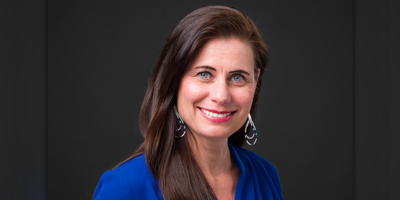Visual voice: Incorporating story with wellness

“We know the hepatitis C virus is a silent, often sneaky virus that wreaks havoc in the liver, is detectable through screening and is cured through oral medication in a matter of weeks. But our rates are rising because there is no personal engagement. We need culturally connected awareness resources to make an impact.”
-Indigenous Knowledge Keeper
While collaborating with an Indigenous community in Alberta to streamline hepatitis C pathways to care, I had the opportunity to take part in the co-creation of a culturally connected liver health awareness film. I was inspired to action when this resource was requested because I had seen firsthand through my previous work as a nurse and community health project coordinator, the positive impact that culturally relevant resources can have on engagement with care. Working in collaboration with Indigenous Knowledge Keepers, we sought to take storytelling, which is our traditional way of sharing knowledge, and combine it with land-based visuals to create a short DocuStory film that would help increase awareness of the vital importance of liver health.
Approaches to the collaboration
Although my professional background is in nursing, I have often struggled with disease-focused approaches to healthcare, and instead felt an affinity with wellness and land-based approaches. Two-Eyed Seeing is an approach that acknowledges different perspectives, creates space for them and finds ways to bring the best of each together. For example, integrating my nurse training and my Indigenous worldview. These approaches were at the foundation of my collaboration with Indigenous Knowledge Keepers, in addition to respect, reciprocity, responsibility, relevance and relationality.
Integrating cultural practices into the filmmaking process
Co-creation of this project began in ceremony where Indigenous community members and Knowledge Keepers hosted a sweat lodge to share their prayers and support, as well as talk about why culture is an important part of wellness. This was the starting point for interview conversations with Knowledge Keepers, who shared traditional views of the liver and its role in the body from Métis, Cree, Stoney Nakoda and Blackfoot perspectives.
Afterwards, we looked for themes from the interview conversations, and then circled back to review and clarify these themes with each of the Knowledge Keepers before moving on to co-create a script outline and scene list for the film.
Considerations for engaging with community members
Because hepatitis C is often surrounded by stigma, myths and fear, our goal was to share a story of wellness and hope in a supportive and relaxed manner. We focused on the healing that comes from the land, from community, from our traditional ways, as well as from sharing facts about hepatitis C transmission, prevention, screening and treatment.
Because stigma and fear are often barriers to engagement, it was important that those who watch the film be able to identify with people that they might feel represent themselves, their family members or their community. For this reason, we included people from several communities, various age groups, different healthcare professions and people with lived experience of hepatitis C. Participant-partners were from a variety of occupational backgrounds including education, policing, nursing, social work and farming.
Careful effort was taken to respectfully honour and engage with each participant-partner through ceremony, traditional tobacco protocol and gift giving. We also provided honoraria for time invested, stories or music shared, as well as for supporting the filming.
Positive responses to the film
Although there are many printed and textual resources on sexually transmitted and blood borne infections (STBBIs), they often contain medical language and few visuals. The goal of working through film was to use a more accessible and visual medium to increase awareness of hepatitis C, as well as engagement in screening and treatment.
The film has already been shared in high school classrooms, community health fairs, harm reduction groups, treatment centres, counselling sessions, workshops, healthcare team training sessions, virtual events, movie nights, liver day events, conferences, film festivals and more. Dried blood spot (DBS) screening at several of these events yielded 50-90% participation following showings of the film. Indigenous community members are excited about the resource and eager to share it with others. They even rewatch it because they say it contains so many layers of knowledge and caring. One Knowledge Keeper stated, “This gives visual voice to an important health message that should go across Turtle Island,” and another community member said, “This is the first time in my life I have received health information without stigma, stress and fear.”
Learnings for future projects
Although some may say this approach wasn’t necessary and that co-creation took a lot of time, effort and funding, I would respond that true transdisciplinary collaboration should be a goal for more community health projects. By incorporating culture, story, land-based visuals, science and lived experience, as well as working with healthcare professionals, celebrities, Elders and young people, we can portray a wholistic perspective that inspires heart engagement and motivates action.
Approaches that are directed by the voices and experiences of Knowledge Keepers, and framed through land-based visuals that Indigenous community members identify with, move us from a focus on barriers, fear and stigma towards a more a wholistic story of wellness, hope and healing that brings us closer to the goal of hepatitis C elimination.
Kate Dunn is an Anishinaabe woman from Mississauga First Nation working in a collaborative role to increase access to hepatitis C treatment and cure for Indigenous communities in Alberta and Ontario. She has a background in nursing and public health and recently completed a doctorate where her Wisdom Seeking research provided opportunities for her to spend time with Indigenous Knowledge Holders, listening to their perspectives on traditional health and liver wellness. Kate is passionate about wholistic and traditional wellness approaches to health and healthcare.
